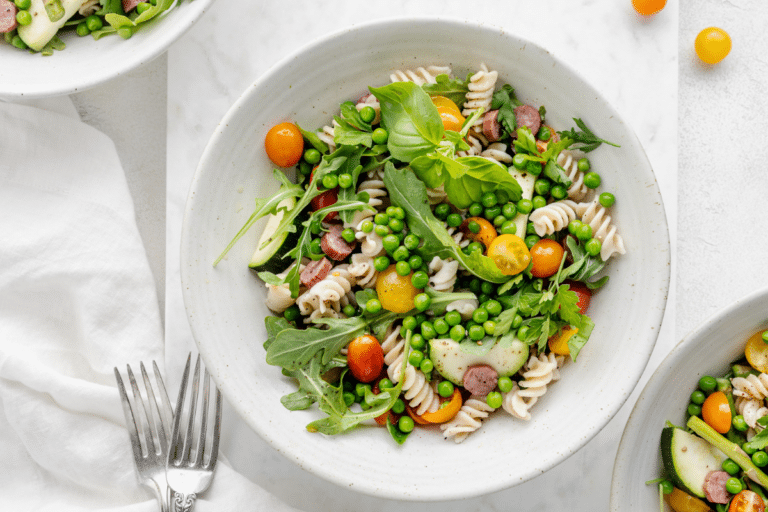How Long Do Hemorrhoids Last – What to Know and What Foods Hurt and Which Help
Hemorrhoids (piles) are swollen veins in the back passage and lower intestine. It sounds embarrassing, uncomfortable, and painful. However, everyone experiences them at some point in their life. According to Johns Hopkins Medical – “About half of all people will have hemorrhoids by age 50”. For some, they are a brief occurrence; for others, they might persist longer.
What causes hemorrhoids?
Adding pressure on the veins can cause the blood to accumulate, leading to an expansion of the veins. Hemorrhoids refer to the duration of this inflammation. One common reason for their appearance is straining during bowel movements.
Main Symptoms:
Common symptoms of hemorrhoids, starting from the milder to the more pronounced, include:
- A slight itchiness or mild irritation in the back passage area
- A bit of discomfort or tenderness during restroom visits, including rectal bleeding
- Some puffiness around the anal opening
- Occasional spotting during bowel movements
Why Understanding How Long Hemorrhoids Last is Very Important!
Addressing hemroids early on can directly impact how long they last. The longer you leave them untreated, the more stubborn and permanent they will become.
There are three areas of impact from having long-lasting hemorrhoids:
- Physical – Managing hemorrhoids in daily life means changing dietary choices, adjusting bathroom routines, and ensuring comfort while traveling.
- Emotional – extended suffering can lead to mental anxiety, embarrassment, and stress. For example, sometimes I hesitate to bend down and pick up a box, usually leaving it or asking someone to help me.
- Treatment – The longer they remain untreated, the worse they become, which may limit treatment options. The initial treatment options are fine, but the more involved treatment options are less fun.
Various surgical procedures are available to treat or minimize internal and external hemorrhoids. These include rubber band ligation, sclerotherapy (chemically scaring the hemorrhoids), electrical coagulation (a unique device that uses infrared light to burn hemorrhoid tissue), hemorrhoidectomy, and hemorrhoidopexy (permanently removing the hemorrhoids). The choice of procedure often depends on the severity of your hemorrhoids, which are typically graded on a scale from 1 to 4, with 4 being the most severe.
In this article, we want to ensure you know that if you act fast, you can help yourself feel better sooner when dealing with something like hemorrhoids. Just like there’s no set time for how long a cold might last because everyone’s different, it’s the same with hemorrhoids. But if you learn about what can help and take charge, you’re looking out for yourself in the best way.
Types of Hemorrhoids:
There are two types of hemorrhoids: internal and external.
Internal hemorrhoids are veins that swell inside your anus; sometimes, the swelling protrudes outside, and you may see blood on your stool or toilet paper. You do not typically feel them as there are fewer nerve endings in the anus.
External hemorrhoids are swollen veins that form under the skin around the anus, and when they are inflamed, they stick out. These are more sensitive and painful and require gentle treatment.
It is possible to have both types at the same time.
Duration of Hemorrhoids:
There are two situations; firstly, there is the initial onset, known as acute; this means they show up out of nowhere and are uncomfortable but will go away fairly quickly with some changes at home.
The second is chronic, where they come and go consistently, sometimes worsening over time.
At this point, you are probably searching, “How long do hemorrhoids last?” and trying to figure out the first and easiest thing to do before going to a doctor. It is essential to know that over 40, having hemorrhoids is very common, but for obvious reasons, people don’t talk or share that they are going through this.
Here is what changes the landscape: get over the shyness, and obviously, don’t overshare. However, you may be surprised how many people in your inner circle have had experience and some good tips to share. At the very least, it immediately feels less scary and helps release the anxiety.
Doing some or all of the following will help immediately; the sooner the body can heal, the sooner the hemorrhoids will disappear.
I have read many medical journals, and to summarize, the primary culprits for the massive increase in hemorrhoids in our culture are three main things. Ready?
- Eating Habits: Many of us consume a low-fiber diet dominated by processed foods. It’s important to eat fruits, vegetables, and whole grains. It’s easy to become constipated and easier to strain during bowel movements.
- Sedentary Lifestyle: Our routines involve prolonged sitting – at work, home, or even on the toilet. This continuous sitting increases pressure in the anal area, encouraging blood to accumulate.
- Mobile Phones: We’re inseparable from our devices. It’s become normal to bring them into the restroom. Engrossed in our screens and relishing privacy, we spend extended periods on the toilet. Over time, this habit can take a toll on our bodies. Extended
Hemorrhoids can develop for various reasons, including childbirth, being overweight, limited physical activity, dehydration, and other digestive issues like constipation and diarrhea.
For quicker relief, commit to the following steps for 1-2 weeks, and I guarantee you’ll begin to feel a difference:
-
- Stay Hydrated: Drink at least 2 liters of water daily. Start your day with a 500ml glass.
- Rehydrate Right: Consider adding hydration salts, a pinch of pink sea salt, or similar rehydrating solutions.
- Boost Fiber Intake: Opt for daily fiber supplements, such as Solufiber in powder form, which is often more palatable than capsules. Aim for two glasses daily, one in the morning and one in the evening, to increase your intake of fruits and vegetables.
- Walk Regularly: Begin with 30 minutes daily, eventually striving for 90 minutes. If needed, break it up into shorter sessions. Walking not only promotes digestion but also helps regulate your gastrointestinal system.
- Consider Stool Softeners: Easier bowel movements reduce strain and swelling. Many options are available at pharmacies. Magnesium powder is an excellent choice—mix it in water, contributing to your daily water intake.
- Include sitz baths in Your Routine: Sitz baths involve sitting in a tub filled with a few inches of warm water, which can help soothe and relieve pain, itching, and muscle spasms associated with hemorrhoids or other anal disorders. Taking a sitz bath for 10-15 minutes, 2-3 times daily, is advisable, especially after bowel movements. Adding Epsom salts to the water can provide additional relief.
- Prioritize Gentle Cleansing: Avoid using regular toilet paper after a bowel movement, as it can be abrasive. Instead, opt for unscented baby wipes or a moist washcloth. Always pat dry gently, avoiding rubbing.
- Avoid Straining: Ensure you don’t force or strain during bowel movements. Using a small footstool to elevate your feet can put your body in a more natural squatting position, making the process smoother and less strained.
- Limit Intake of Irritating Foods: Some foods and drinks, such as spicy foods, red meat, caffeinated beverages, and alcohol, can worsen hemorrhoids. Limiting their consumption is best, especially if you notice they trigger or worsen your symptoms.
After committing to these steps for a few weeks, you’ll also become more attuned to how different foods affect your well-being. Recognizing what contributes to good and bad days will be a big step towards better health.
This next section delves into how different foods influence our bodies. Hemorrhoids can often be how the body reacts to constipation. When stools are dry and take their time, our body naturally exerts more effort to help things along and can sometimes cause the veins to become swollen.
Choosing foods that are easily digestible, rich in fiber, and support regular bowel movements can help. However, making these changes can be challenging because it means setting aside particular favorites and embracing new foods that might be unfamiliar.
Some examples of foods that are very good:
Foods rich in fiber, such as oatmeal, bananas, whole wheat toast, avocados, blueberries, chia seeds, kale, spinach, kiwis, apples, and many other fruits or vegetables, can be beneficial for digestion.
On the other hand, foods that might be more challenging to digest—and could potentially contribute to constipation—include red meat, heavily processed items, fried delicacies, fast food, pasta, and other refined carbohydrates.
It’s not that you can’t ever enjoy the latter group, but prioritizing the fiber-rich choices and following the earlier-mentioned steps can significantly influence the duration and severity of hemorrhoids.
Adults should consume about 38-42g of fiber daily for optimal health. However, we typically get only 5-13g/day. Achieving the recommended amount might seem challenging, but it’s essential for managing certain conditions. While no specific pills or prescriptions directly address this, lifestyle changes can make a big difference.
These adjustments are necessary for us to consider treatments, some of which could be invasive, like surgery.
Boosting Fiber Intake: My Nutritionist-Approved Strategy
Start the Day Right:
Drink 500 ml of water with a splash of fresh lime juice.
Take one serving of Metamucil.
Breakfast: High-Fiber Smoothie (24g)
- 1 scoop of protein powder
- 1 cup of blueberries
- A sprinkle of flaxseed
- ½ an avocado
- Almond milk to blend
Lunch: Enjoy a whole wheat wrap with your favorite fresh veggies and lean proteins.
Snack Time: 2 slices of whole wheat toast, topped with either peanut butter or creamy avocado.
Another serving of Metamucil or Fiber Supplement.
Dinner: Opt for lean proteins like fish, chicken, turkey, or shrimp (try to limit red meat).
Incorporate green veggies: green beans, kale, spinach, Brussels sprouts, and more.
Complement with quinoa. If you prefer rice or potatoes, just keep the portion modest.
End with one more dose of Metamucil or Fiber Supplement.
This regimen has been a game-changer for me, and I hope it benefits you too!
When traveling, dining out, or indulging in comfort foods like pizza or pasta, I ensure I stay hydrated and don’t skip my Metamucil or Fiber Supplement. This routine helps balance out occasional indulgences.
The following day, I strive to make healthier choices.
Start by incorporating one or two of the previously mentioned suggestions daily. Gradually work your way up until you’re consistently following all five for at least two weeks. Even if you notice improvements early on, giving your body ample time to recover fully is crucial.
Here are a couple of additional tips:
- Resist bringing your phone to the restroom.
- Limit your time on the toilet—just stay as long as necessary.
By embracing these habits, you can significantly reduce the duration of hemorrhoids. If hemorrhoid symptoms continue despite these efforts, it’s essential to see doctor immediately. And always remember: advocating for your health might also mean seeking specialist attention or medical advice.

